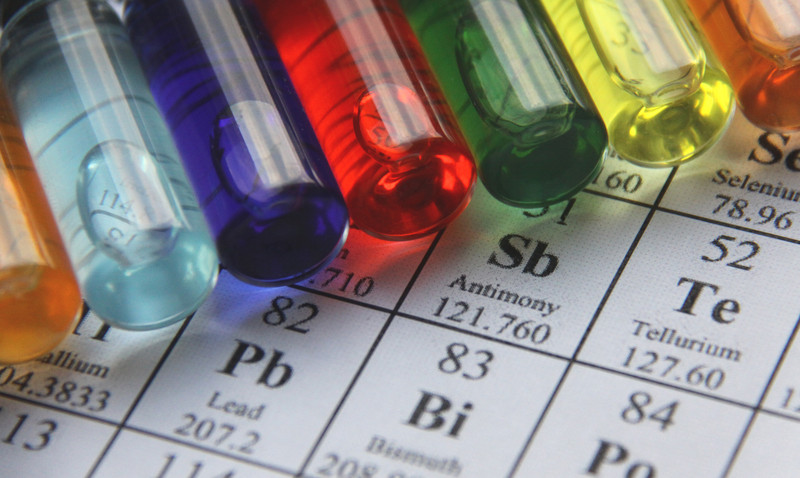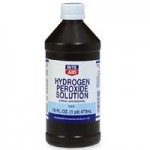 Lessons:
Lessons:
- Lesson 22: Compounds and Chemical Reactions
- Lesson 23: Iron Sparklers
- Lesson 24: Decomposition Reaction
- Lesson 25: Decomposing Hydrogen Peroxide
- Lesson 26: Chemical Alnalysis on Weight
- Lesson 27: Reagents
- Lesson 28: Aqueous Reactions
- Lesson 29: Electrolytes
- Lesson 30: Aqueous Precipitate Reactions
- Lesson 31: Hot Liquids and Cool Solids
Quick Links: Volume 1-1 Volume 1-2 Volume 2-1 Volume 2-2 Volume 3-1 Volume 3-2
[am4show have=’p140;’ guest_error=’Guest error message’ user_error=’User error message’ ]
Lesson #22: Compounds and Chemical Reactions
Lesson #23: Iron Sparklers
Sparks flying off in all directions…that’s fun. In this lab, we will show how easy it is to produce those shooting sparks. In a sparkler you buy at the store, the filings used are either iron or aluminum.
The filings are placed in a mixture that, when dry, adheres to the metal rod or stick that is used in making the sparkler. The different colors are created by adding different powdered chemicals to the mixture before it dries. When they burn, we get red, blue, white, and green.
Materials:
- Card stock
- Alcohol burner
- Iron filings
- Gloves
It’s tempting to use a handful of filings to produce a literal shower of sparks. The effect is actually better with small amounts. To accomplish anything with a large pile of filings would require you to blow REALLY hard to make a filing cloud that will combust well. A larger reaction means more sparks flying around. The amount of filings recommended in the lab is a safe amount. Increasing the amount used increases the danger. You could take an interesting, fun, and safe lab and transform it into something that burns the hair off your arms. Besides, burning hair doesn’t smell good.
Here’s what’s going on in this experiment:
Iron + Oxygen –> Iron Oxide
Iron and Oxygen are burned to produce Iron Oxide
This is the balanced chemical equation: 2Fe + O2 –> 2FeO
Download Student Worksheet & Exercises
Handling iron filings is not dangerous. Minor things that can occur, such as: Iron filings can stain your skin gray; if there is a large filing in your container, rubbing your finger against it could give you a painful splinter.
Return unused filings to your container. Any surface these filings touch turns gray, so keep your filings corralled. Cleaning your work surface with a wet paper towel is the easiest way to clean up.
Discard any unburned iron powder that is coating the area around your alcohol burner into a trash container outside. It is not toxic, but still….don’t use chemicals or experiment residue as a snack. Never a good idea.
What is going on here? When you build a campfire at the campground, why doesn’t the grill spark and burn up? The grill is iron, the filings are iron, and there is always oxygen available in the air. What’s the deal here? Combustion needs two things, fuel and fire. Not enough of either and nothing will burn. But a woodstove is made up of a lot more iron by weight than that little scoop of filings. It has to do with surface area. Take an equal weight of solid iron and iron filings. Put a match to the solid iron and all it gets is hot. Blow the same weight of iron filings into the flame and POOF! The key is surface area. Surface area can affect the way a chemical reaction occurs, and in this case, whether or not it occurs at all.
To better understand the effect of surface area, eat some candy! Put a whole Lifesaver candy in your mouth. Suck, move your tongue all over it, swish it back and forth in your mouth. You are not allowed to bite or swallow it. How long does it take to completely dissolve? Do the same thing with another Lifesaver broken into pieces. Which dissolved faster? The same thing happens with the iron. The smaller the pieces, the easier it is for the iron to burn. When you blew iron filings into the air above the flame, you increased the surface area even more by increasing the air space between the particles. An increase in surface area always makes things happen faster. Granulated sugar dissolves faster than sugar cubes, and a piece of wood burns faster after you chop it into kindling. Pay attention and you will notice other situations where increasing surface area speeds up physical changes and chemical reaction times.
An additional experiment that you can try on your own is burning steel wool. Properly prepared ahead of time, steel wool will spark as it burns up. A great emergency fire starter is a 9V battery and steel wool. Fluff up the steel wool and touch a portion of it across the terminals of the battery. The steel wool will burn just like it did with a match.
Steel wool is just a ball of really long iron filings. If you fluff out the steel wool and light it, it burns easily. If you do try this, do it outside over the lawn or an area of dirt. At some point in the combustion you will want/need to drop the steel wool or get your fingers singed.
Lesson #24: Decomposition Reaction
Lesson #25: Decomposing Hydrogen Peroxide
 If you’ve ever wondered why hydrogen peroxide comes in dark bottles, it’s because the liquid reacts with sunlight to decompose from H2O2 (hydrogen peroxide) into H2O (water) and O2 (oxygen). If you uncap the bottle and wait long enough, you’ll eventually get a container of water (although this takes a LOOONG time to get all of the H2O2 transformed.)
If you’ve ever wondered why hydrogen peroxide comes in dark bottles, it’s because the liquid reacts with sunlight to decompose from H2O2 (hydrogen peroxide) into H2O (water) and O2 (oxygen). If you uncap the bottle and wait long enough, you’ll eventually get a container of water (although this takes a LOOONG time to get all of the H2O2 transformed.)
Here’s a way to speed up the process and decompose it right before your eyes. For younger kids, you can modify this advanced-level experiment so it doesn’t involve flames. Here’s what you do:
Materials:
- hydrogen peroxide
- empty water bottle
- balloon
- charcoal piece
Want to do this experiment with a more dramatic flair? Try speeding it up as shown in the video below.
IMPORTANT: DO NOT DRINK ANYTHING FROM THIS LAB!!
Pour hydrogen peroxide into an empty plastic water bottle. Add a scoop of activated charcoal (you can also smash regular charcoal with a hammer to get it to fit – the smaller the bits, the better it will work, but make sure you do NOT use charcoal pre-soaked in lighter fluid). Cap your bottle with a helium-quality latex balloon and set aside. After several hours, you will have a balloon filled with oxygen.
Lesson #26: Chemical Alnalysis on Weight
Lesson #27: Reagents
Lesson #28: Aqueous Reactions
Lesson #29: Electrolytes
When an atom (like hydrogen) or molecule (like water) loses an electron (negative charge), it becomes an ion and takes on a positive charge. When an atom (or molecule) gains an electron, it becomes a negative ion. An electrolyte is any substance (like salt) that becomes a conductor of electricity when dissolved in a solvent (like water).
This type of conductor is called an ‘ionic conductor’ because once the salt is in the water, it helps along the flow of electrons from one clip lead terminal to the other so that there is a continuous flow of electricity.
This experiment is an extension of the Conductivity Tester experiment, only in this case we’re using water as a holder for different substances, like sugar and salt. You can use orange juice, lemon juice, vinegar, baking powder, baking soda, spices, cornstarch, flour, oil, soap, shampoo, and anything else you have around. Don’t forget to test out plain water for your ‘control’ in the experiment!
Here’s what you need:
- 2 AA batteries
- AA battery case
- 2 alligator clips
- LED
- water
- salt
- glass jar (like a clean jam jar)
Download Student Worksheet & Exercises
Exercises
- Why does electricity flow through some solutions but not all of them?
- What is a salt?
- How are electrolytes used today in real life?
- Which substance was your top conductor?
- Which substance didn’t conduct anything at all?
- What happens if you mix an electrolyte and non-electrolyte together?
Lesson #30: Aqueous Precipitate Reactions
Lesson #31: Hot Liquids and Cool Solids
Dissolving calcium chloride is highly exothermic, meaning that it gives off a lot of heat when mixed with water (the water can reach up to 140oF, so watch your hands!). The energy released comes from the bond energy of the calcium chloride atoms, and is actually electromagnetic energy.
When you combine the calcium chloride and sodium carbonate solutions, you form the new chemicals sodium chloride (table salt) and calcium carbonate. Both of these new chemicals are solids and “fall out” of the solution, or precipitate. If you find that there is still liquid in the final solution, you didn’t have quite a saturation solution of one (or both) initial solutions.
Materials:
- calcium chloride (AKA: “ice melt” or “Dri-EZ”)
- sodium carbonate (AKA: “washing soda”)
- two disposable cups
- two test tubes with caps
- medicine dropper
- distilled water
- goggles and gloves
Download Student Worksheet & Exercises
Mix up a saturated solution of calcium chloride in one test tube and a saturated solution of sodium carbonate in the other. Here’s how to do this:
Sprinkle 1 teaspoon of calcium chloride into a disposable cup. Add in a few tablespoons of water and stir, dissolving as much of the solid into the water as possible. Add more calcium chloride until you see bits of it at the bottom that refuse to dissolve. Now pour only the liquid into your test tube; the liquid is your saturated solution. Do the same for the sodium carbonate.
Do the test tubes feel hot or cold? Pour one test tube into another.
Instant solid.
Calcium chloride is hygroscopic (absorbs moisture), exothermic (releases heat when melted or dissolved), and deliquescent (dissolves in the moisture it absorbs and retains it for a long time).
Click Here to go to Volume 2-2!
[/am4show]
